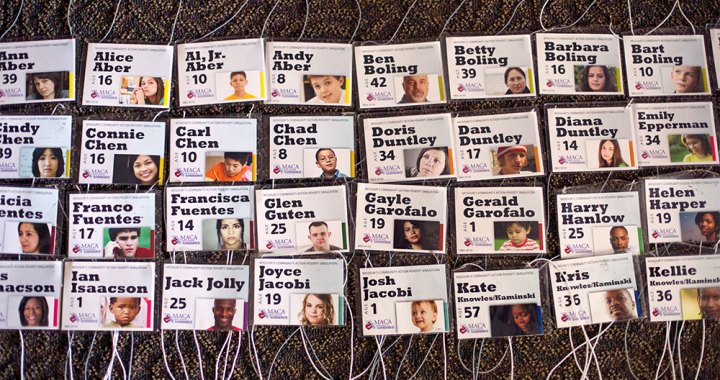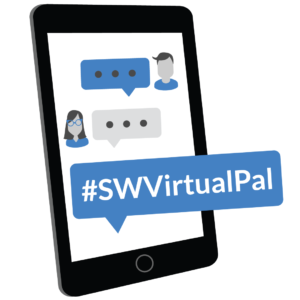Tips for the new Social Work Adjunct Instructor
In my role as the Director of our undergraduate social work program this summer, I have been onboarding several new adjunct instructors to our Department. It is a fun process as new adjuncts bring new ideas and energy to the role, and I have been reminded of my early days in social work education as an adjunct instructor. I taught statistics to social work students for four years while working on my Ph.D. I often think back to that experience as my boot camp for my career as an academic in social work education. One of my teaching mantras is “if I can teach stats, I can teach anything.” If you are unsure that you want to be an adjunct instructor, please read this post by my colleague, Dr. Trish Desrosier, at Western Kentucky University, who will explain why you might want to teach a class for your local social work program. If you already have a new adjunct teaching position, congratulations and welcome! In this post, I write about a list of tips I share with our new social work adjuncts based on my experiences and their questions.
Collect the key course materials as soon as you can. Start by getting a copy of the course syllabus as soon as possible, along with the textbook and other materials such as PowerPoint slides, lecture notes, and handouts. This includes digital content from the institution’s learning management system. The syllabus is your road map for the course, and the other content will make the ride through the semester smooth.
Technology Disruption Readiness Plan: A Best Practice for the Social Work Classroom
In social work education, one lesson we can take away from the COVID pandemic has brought many lessons to social work education is to be ready when a crisis or disruption requires an instructor and students to quickly shift an entire course, a class session, or even an assignment. In today’s world, this typically means understanding when and how to adapt our learning environments to incorporate or adjust for digital technologies, both hardware (i.e., portable devices, laptops, WiFi access) and software (i.e., learning management systems). A social work educator can prepare for future disruption in their classroom by developing a course-level Technology Disruption Readiness Plan. Such a plan aims to thoughtfully and systematically think through how one will manage disruptions due to technology to the educational process and then share this information with students. This approach is recommended in the NASW Standards for Technology in Social Work Practice under Standard 4.06 Technological Disruptions, which focuses on what to do when technology fails with online teaching, such as a power outage or a laptop failure. It is easy to transfer this idea to other forms of educational disruption, including situations unique to an individual (i.e., serious illness and military deployment) or community-level crises such as natural disasters. Further, the disruptions occur with instructors as well, and having a plan to hand off one’s class to another instructor can make the transition less traumatic for you and your students.
Poverty Simulations in Social Work Education
As many of you may already know, simulations are increasingly being incorporated into social work education in various ways (online, in-person, virtual or augmented reality, large-scale, standardized patient, OSCE (Objective structured clinical exams), formative assessment, etc.). In addition, simulations often cover a range of topics such as child welfare home visits, assessment skills, and interprofessional teamwork. The goal of a simulation is to offer students an alternative or mock situation of a real one to meet specific learning outcomes. Reasons for using simulations range from assessing student competency, wanting to offer unique learning experiences to students (i.e., practice assessing for suicidality), and needing to shift instruction to virtual settings (i.e., think moving field hours out of community-based settings).
I have worked on several projects that integrate simulations into our BSW and MSW programs at the University of Alabama at Birmingham (UAB), where I work. One of the most successful has been the use of poverty simulations at our institution. In this blog post, I share why and how we implement poverty simulations, offering guidance for those wanting to add this active learning experience to their curriculum.
Re-Capping Teaching & Learning in SWK for 2021
One of my academic favorites is Dr. Katie Linder who produces a podcast called You’ve Got This, where she offers advice and examples for other academics as they navigate the world of higher education. Frequently, Katie talks about goal setting and how she works to accomplish her own goals. As I listened to her end-of-the-year podcast about her 2021 goals, all I could think about was my blog.
You see, every year, I set goals for this blog, and rarely do I accomplish these goals. Here is some of the evidence:
Review of Teaching & Learning in Social Work for 2019
Review of Teaching & Learning in Social Work for 2018
Review of Teaching & Learning in Social Work for 2017
Review of Teaching & Learning in Social Work Blog Posts for 2016
I even tried to set goals for the first quarter of 2020 and publish only seven blog posts. Sigh! Here they are:
Using LinkedIn for #SWVirtualPal
Editor’s note: This post is cross-published on the Social Work Virtual Pal website. Social Work Virtual Pal is a global and virtual community of practice for the social work profession, that digitizes the practice of having a pen pal for professional learning and networking. This community focuses on connection and collaboration among social workers to offer the profession with an opportunity to harness its collective knowledge for the greater good. We have resources for social work educators so, please consider incorporating #SWVirtualPal in your social work course. Learn about Social Work Virtual Pal here.
Social Work Virtual Pal now has a LinkedIn Group for social work students, instructors, and practitioners to connect with other social workers around the world. Similar to our Twitter account, this is a virtual space that digitizes the practice of having a pen pal for professional learning and networking. In addition, this community focuses on connection and collaboration among social workers to offer the profession an opportunity to harness its collective knowledge for the greater good. In this blog post, we offer details for creating a LinkedIn Profile, establishing your digital networking goals, and then joining our LinkedIn Group to find your #SWVirtualPal.
Where to start
LinkedIn is a social networking site designed specifically for professional use and offers a robust user profile system that serves as a digital resume. It is a great place to establish your online presence as a social work student or practitioner. As with any social media platform, you’ll want to start with creating your LinkedIn profile. There are many online tutorials on creating a high-quality LinkedIn profile, and LinkedIn’s Help feature offers many tips and guides on navigating the platform. Before getting started with your profile, you will want to have a professional-looking photo and a copy of your resume handy. Set aside a few hours to create your profile. Here is a good profile checklist designed for college students, but applicable to anyone.
Because #SWVirtualPal is designed to help social workers from around the world connect with other social workers, there are some additional features to consider adding to your profile:






